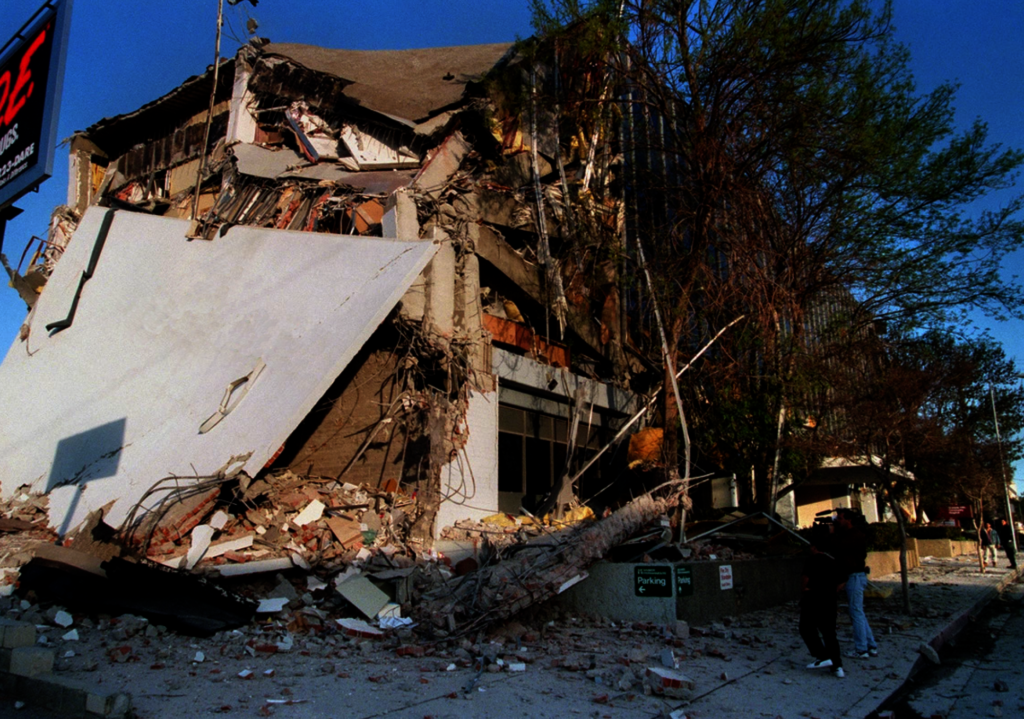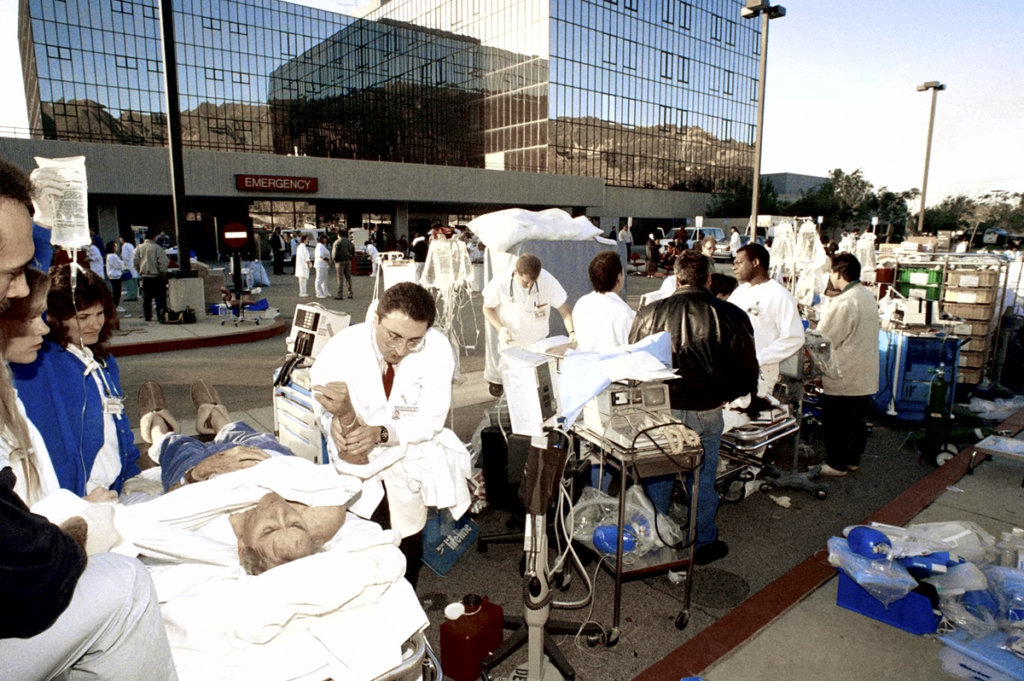
Seismic Retrofitting Related to Building Hazardous Materials
Following the devastation of the 1994 Northridge earthquake, California passed into law seismic retrofitting requirements. This law requires hospital buildings to remain fully operational following a quake, with a deadline of 2030. Currently, 258 of 414 hospitals have at least one building yet to meet this set of standards. Additional requirements for a variety of building types in addition to hospitals have been added in the intervening nearly 30 years.
Seismic Retrofit Process
The seismic retrofit/upgrade process involves the following steps which can impact environmentally regulated materials (ERMs) such as asbestos and lead paints/coatings.
1. Review as-built structural drawings: and drawings at the Design Development and Construction Document phases to determine the areas where ERMs are located and where to focus the materials inspection and testing.
2. Intrusive materials inspection and testing:
-
- Before opening building areas to inspect the building framing and perform materials testing of the framing, the project team needs to know if the finishes that will be disturbed contain asbestos and/or lead based paint.
- Citadel would perform a survey of the areas to be inspected as required by regulatory agencies including the local Air Pollution Control District (APCD)/Air Quality Management District(AQMD), Cal-OSHA, and the California Department of Public Health (CDPH).
- If ERMs are identified, an ERM abatement contractor will be required to remove them.
- Commonly, the building is occupied during this work, in which case having a consultant present to perform monitoring is prudent and provides regulatory and liability protection for the owner and project team.
- In many cases, the framing or other infrastructure exposed for inspection may be coated with ERMs, primarily fireproofing and primer on steel members. These are potentially asbestos-containing and lead-based, respectively. Prior to disturbing these coatings, testing for asbestos and lead content will be required to satisfy regulatory requirements. This is easily performed if Citadel is on site during the opening of the finishes. An alternative is to assume these materials contain asbestos and/or lead, and the abatement contractor could remove them in conjunction with finish opening/removal (the previous step).

A picture of a hospital after the 1994 Northridge earthquake, with doctors tending to patients outside in the parking area. California passed into law seismic retrofitting requirements. This law requires hospital buildings to remain fully operational following a quake, with a deadline of 2030. Currently, 258 of 414 hospitals have at least one building yet to meet this set of standards. Additional requirements for a variety of building types in addition to hospitals have been added in the intervening nearly 30 years.
- Citadel would perform a survey of the areas to be inspected as required by regulatory agencies including the local Air Pollution Control District (APCD)/Air Quality Management District(AQMD), Cal-OSHA, and the California Department of Public Health (CDPH).
- Before opening building areas to inspect the building framing and perform materials testing of the framing, the project team needs to know if the finishes that will be disturbed contain asbestos and/or lead based paint.
3. Once the intrusive phase is complete, and the overall retrofit design is prepared, a more thorough (selective demolition) ERM survey of all the areas to be impacted by the retrofit may be required. This will ensure that the ERMs, if present, can be managed correctly during the retrofit/upgrade.
4. If ERMs are present in the finishes to be removed, or the structural members to be impacted are coated with ERMs, abatement of the materials must be performed so that the installation of upgrades, such as bracing, fiberwrap, additional concrete shear walls, etc. can proceed on ‘clean’ surfaces.
-
- The abatement/removal requires an ERM abatement contractor.
- Having a consultant like Citadel present to perform monitoring during the removal and/or ‘clearances’ after the removal is often required by the installation trades, and provides regulatory and liability protection for the owner and construction team.
Select Seismic Retrofit Experience
- 9300 Wilshire in Beverly Hills
- 1800 Avenue of the Stars in Century City
- 4800 Wilshire (Former Farmers Building) in Beverly Hills
- 101 Continental
- UCLA South Tower of the Center for Health Sciences
- UCLA Neuroscience and Human Behavior – NPI Tower
- St. Vincent’s Medical Center in Los Angeles
- Seton Medical Center in Daly City
- 9720 Wilshire Boulevard in Beverly Hills
- Valley Presbyterian Hospital in Van Nuys
- Glendale Memorial Hospital and Healthcare Center in Glendale
- Southern California Hospital-Culver City Campus in Culver City
- UCLA Jules Stein Eye Institute
- UCLA Marion Davies Children’s Health Center
- UCLA Clark Library
In Citadel’s experience, every project will have unique requirements. If you have any questions about a current or future retrofit/upgrade project, please contact our Principal of Building Sciences, Kier DeLeo.
www.CitadelEHS.com | Phone: 818 246 2707 | [email protected]
